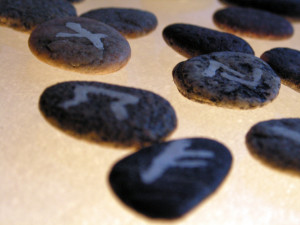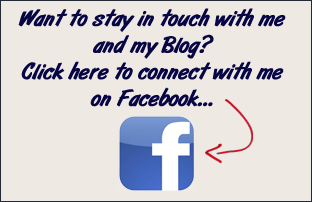Runes 101
 A couple of months ago I decided to learn a new divination tool that I could offer to people in the readings I do. I’ve been working diligently in learning this new craft and have found that using this tool has come quite naturally to me.
A couple of months ago I decided to learn a new divination tool that I could offer to people in the readings I do. I’ve been working diligently in learning this new craft and have found that using this tool has come quite naturally to me.
What are runes, you ask?
This is the most common question posed to me when I tell people I use runes. Most people have heard of using tarot cards as a medium for divination, and runes are much the same. They are just a little less well known.
Runes are an alphabet that first appeared among Germanic tribes in Central and Eastern Europe. Although it hasn’t been determined when they actually started, some scholars are saying they began as early as 100 B.C.
There is a description of runes and rune-casting written in 98 A.D. by a Roman historian named Tacitus. He wrote the following of the Germanic tribes:
“To divination and casting of lots, they pay attention beyond any other people. Their method of casting lots is a simple one: they cut a branch from a fruit-bearing tree and divide it into small pieces which they mark with certain distinctive signs and scatter at random onto a white cloth.
Then, the priest of the community if the lots are consulted publicly, or the father of the family if it is done privately, after invoking the gods and with eyes raised to heaven, picks up three pieces, one at a time, and interprets them according to the signs previously marked upon them.”
They continued to grow in popularity until the 1600’s, when the rise of Christianity brought this practice underground and it nearly disappeared. By the 19th Century, there were only pockets of “rune singers” which remained in remote areas of Scandinavia.
In the early 20th Century an Armanen system of runes was adopted by the National Socialist Movement in Germany. It seems that the darkest period in the history of runes is with their revival by German scholars connected with the Nazi movement. They took old Germanic symbolism and mixed it with Nazi ideology for manipulative purposes. After the Second World War, runes fell into disfavor because of their association with Nazism. It wasn’t until the mid 1980’s with the “new age” movement that runes began to regain their popularity.
There are many different versions of runes and their alphabets. The 3 most common forms used mainstream today are the Elder, Anglo-Saxon and Younger Futhark systems. Although runes are considered an ancient alphabet and was used as a form of language or communication, they were first and foremost used for divination and magick.
They are an alphabet comprised of symbols, all of which have meanings to them. You can compare them to tarot cards in the sense that each card has a meaning to it. Each rune has esoteric meanings and properties associated with it, which means that they translate into a word or a phrase that represents the forces of nature and mind. So basically, each rune has a story attached to it, much like each card in a tarot deck.
The symbols on runes are made up of straight lines, which makes the characters simple to cut into wood or stone. The earliest inscriptions that have been found have been dated to the 3rd Century, but many scholars believe that runes have been in use for some centuries before.
Wood seems to be the most favored medium for portraying runes. This is because the energy from the caster is much more easily absorbed into that material. Stone, metal and bone are also popular choices for runes.
I’ve decided to follow the Elder Futhark version of runes, which contain 24 different runes. Just like tarot cards, runes are broken down into groups. There are 3 groups of 8 runes each.
Rune-casting itself is similar to tarot cards as well. They have similar spreads, 3 stone, 7 stone, 9 stone, and others. I think that one difference is that with runes, you will most likely ask a more direct question and get a more direct response where as with Tarot, things can be more generalized.
Although I have been working with runes for a couple of months now, there is still so much to learn! They are quite an in-depth divination tool and I look forward to sharing my new findings with you!
If You Liked This Post You May Also Like These...
- Legacy Of The Divine Tarot Cards
- Developing Your Psychic Abilities Workshop
- Drea’s Intuition Launched!
- A Connection Through The Past
- Are You Feeling Stuck As A Healer?


Wow! Sounds awesome Drea 🙂
Looking forward to hearing more about this!
Very cool. I have been working with my Tarot cards a lot lately and am starting to get really good results. I think any divination tool gets better over time the more of your energy it absorbs. I bet runes will be the same, probably even more so than Tarot cards.
I’ve never used runes before, I’ll have to try them out.
.-= Paul´s last blog ..Google Instant – What Does This Mean to Your Blog SEO =-.
Just read your article on Runes, very interesting. I am a Rune Master. Have been reading Runes for over 30 years, and last year with the assistance and guidance of Spirit, my guides and angels, I wrote my own interpretations for my Rune Set. I see you have been to Moncton, that is where I live now and am immersing myself in the Lightworker community here. Are you planning on coming through the area again anytime soon?
Hey,
Are you gonna write up another article on HOW to read runes??
I think I just might do that in the weeks to come! Thanks for the comment! 🙂